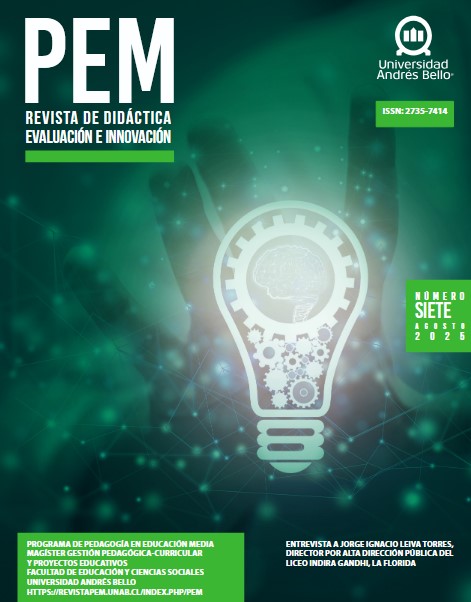Número actual
Núm. 7 (2025)

PEM. Revista de Didáctica, Evaluación e Innovación es una publicación semestral digital, dedicada a trabajos y estudios pedagógicos y sobre problemáticas investigadas en los diferentes niveles educativos, desde perspectivas disciplinares, interdisciplinares y transdisciplinares con énfasis en Didáctica, Evaluación e Innovación.
Publicado:
30-08-2025


